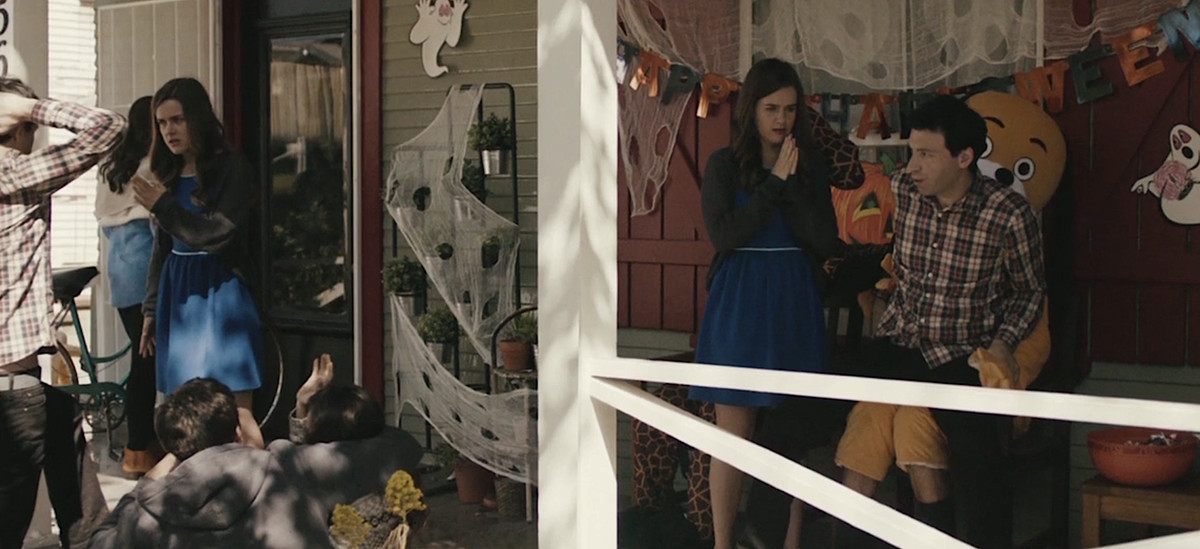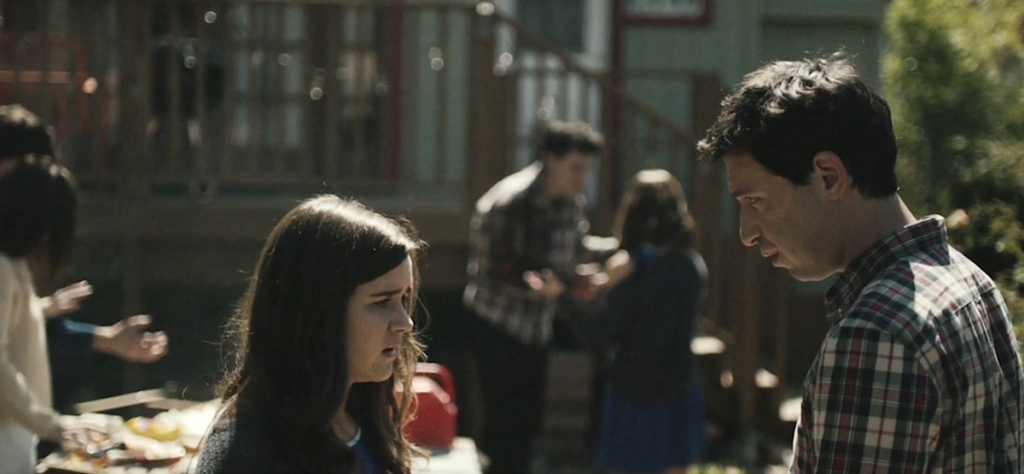There’s good news out there for fans of the stunningly ambitious martial-arts multiverse comedy Everything Everywhere All At Once who are just discovering the work of directors Daniel Scheinert and Daniel Kwan. The duo, often credited just as “Daniels,” only have one other feature film to their name — the deliriously weird Swiss Army Man, in which Paul Dano befriends the rotting, waterlogged corpse of Daniel Radcliffe, and they learn important life lessons together. But Daniels have a long history in short films, music videos, and special projects, and looking through their library of past work, it’s easy to find enjoyably weird and well-crafted stories that come from the same special-effects-driven, reality-warping sensibility.
In particular, it’s worth checking out their eight-minute short Possibilia, an interactive experiment billed as “an interactive love story set in the multiverse… whatever that means.” Completed in 2016 as a technological proof-of-concept experiment for Xbox Live Entertainment, Possibilia follows disintegrating couple Rick (Girls’ Alex Karpovsky) and Pollie (The Mindy Project’s Zoe Jarman) through an eight-minute fight. At many steps along the way, users can choose different paths through that fight, which might send Rick and Pollie out into the garden, upstairs, or into flashbacks to other points in their lives. As the branches expand, the versions of them multiply, until they’re fighting amid many other possible versions of themselves, all having the exact same argument.
Where Everything Everywhere All At Once ultimately looks into the abyss of life and finds a hard-won sense of joy there, Possibilia feels much more cynical, because no matter what choices the viewer makes, Pollie and Rick continue fighting. It’s never clear exactly what they’re fighting about — there are no specifics, just pent-up frustration exploding into short-term action. And by the end of the piece, they agree they’re making progress and they settle back into a sense of calm — but the piece is an infinite loop, and the fight immediately starts up again. The Daniels tell Polygon that was always part of the project, because they wanted to buck against the convention of choose-your-own-adventure interactive stories.
“In Possibilia, the characters don’t really make new choices,” Scheinert says. “It’s about their lack of free will.”
Kwan says that idea came directly from the limitations of interactive entertainment, where most of the time, user choices are limited and illusory. “With every project, a lot of our inspiration comes from frustration with the medium, or frustration with the genre,” Kwan says. “With choose-your-own-adventure stories, it’s so frustrating, because usually, the story doesn’t care. ‘Do I go left or do I go right? Do I drink Coke or do I drink Pepsi?’ It doesn’t matter, and it even waters down the experience of choice. Even with Netflix’s Bandersnatch — it’s a really fun experiment, but you don’t ever really get to fully investigate things.
“So with Possibilia, we said, ‘Let’s destroy [the concept of the choose-your-own-adventure story].’ Let’s give you the illusion of choice, but ultimately, all the choices will funnel down to the same place.”
While Scheinert admits that could be frustrating for viewers, he likes the way that annoyance is part of the narrative, as much as it’s part of the interactive experience as well: “Even the characters in the movie are just as frustrated, no matter what you pick,” he says.
Both directors say working on Possibilia in 2016 was one of the many factors that helped shape Everything Everywhere All At Once. “When we were working on Possibilia, the assignment ‘Make a short film with interactivity in there’ led us to ask, ‘How could you do the multiverse in film?’” Scheinert says. “There was so much we couldn’t do in that one.”
Kwan says the need to rebel against genre and format limitations was also a major part of the movie. “That spirit is also what led us to do the multiverse in Everything Everywhere All At Once, because we wanted to destroy what everyone else was doing, and play with the frustrations of the multiverse that we had seen in other people’s stories,” he says.
The challenge of a story like Everything Everywhere is a lot like trying to depict a three-dimensional object in a two-dimensional medium. A real multiverse story would acknowledge the existence of infinite possibilities, but that’s a difficult thing to do within the limitations of a single story. With this movie, the Daniels at least tried to live up to the title, by considering how the prospect of infinity could cause psychotic breaks. Destroying both the characters’ minds and the audience’s emotional barriers was part of the core concept for the film, but it was an ambition that suited the Daniels’ personal tastes and ambitions.

Photo: Xbox Live Entertainment via Polygon
“What I think we found in things like Possibilia is that infinity is such a terrifying and beautiful thing that we are uniquely suited to work on,” Kwan says. “Because we have two brains. He loves math; I love excess and maximalism. And I think that’s why we’re drawn to these ideas of too much, and trying to clean up infinitely.”
Possibilia doesn’t quite reach infinity — it has that limitation that it’s more about trying to tell a single story many different ways than about trying to tell many different stories, which means the viewers and characters are trapped together in that infinite loop. But it’s still a fascinating experiment in goofing around with the interactive-entertainment concept, and in exploring the same scene through many different tones, directions, interpretations, and points of view. It’s well worth watching through several loops, to see how Kwan and Scheinert’s familiar obsessions with form, startling visuals, and playful special effects looked in their earlier days, and what playing with possibility taught them about playing with infinity.

